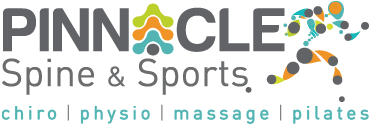Traditionally, the acronym ‘RICE’ has been used when managing acute traumatic injuries, including sports injuries. However, recently this acronym has been revised. By providing a more comprehensive and accurate guide to management, the goal is to set the injured individual on the fastest and least painful path to healing and returning to their sports and hobbies.
The new acronyms are:
- PEACE for initial management (1-3 days)
- LOVE for management after this period
- And avoid HARM.

Protect: Avoid strenuous or aggravating activities and movements for 1 to 3 days. This doesn’t mean that we should just rest and do nothing. Rather, we can go about our daily activities with caution, but being vigilant to avoid movements that either cause pain, or that your health professional has warned you against performing, as they may slow recovery. Aim to gradually remove protections and return to activity incrementally within the time frames that your health professional has recommended.
Elevate: This remains from the old ‘RICE’ acronym, because elevation is a good preventative measure to control excess fluid build-up in the injured limb or extremity.
Avoid: (Anti-inflammatory modalities): The use of Anti-inflammatory drugs can be detrimental to healing for various reasons, and can cause delays or impairments in healing integrity. Also, the traditional use of ice has recently been questioned: Although it offers benefits in pain relief, it may also disrupt the processes that lead to repair of tissue.
Compress: This step also remains from the old acronym. Studies on its benefit may be contradictory, but overall it can be an effective way to control swelling in extremities and preserve quality of life without resorting to anti-inflammatory drugs.
Educate: Recovery is not a passive process, but instead should be seen as a team effort between the therapist and the client. A good health professional will:
- Educate you about how to manage your injury safely at home, work and during recreational activities.
- Educate you about what activities to avoid or perform with caution.
Your role as a client is to remain mindful of these recommendations and practices, and also to ask your health professional if you are unsure of what you are meant to be doing, or why you are doing it.
During the first 48-72 hours, avoid HARM – Heat, Alcohol, Running, Massage. Although you may want to have a few red wines or beers to commiserate, alcohol has been shown to make swelling worse. Please note that later in the healing process, heat and massage can be beneficial. Running is not bad per se, however it is a high impact activity, and must be reintroduced at the appropriate time, with guidance from your therapist.
After the initial period, LOVE is the next acronym to follow:
Load: In this case, load refers to using weight (including body weight) to strengthen muscle tissue. An active approach to recovery, applying strengthening as soon as the healing tissues allow, will result in improved recovery time frames and outcomes. It is important, however, that this process is supervised by a health professional to avoid further injury.
Optimism: Ok, this point sounds might sound out-of-place to you. Despite the ‘Peace and Love’ message, we haven’t gone all ‘new-age’ on you! In the context of recovery, we are referring to staying positive, and not getting ‘down’ over minor setbacks and frustrations. The path to recovery is never a straight line. It is important to stay optimistic about progress, and if you have fears or anxieties, do not hesitate to discuss them with your practitioner.
Vascularisation: This refers to the supply of blood to healing tissues. Getting moving early in some type of aerobic exercise (even gentle exercise), can assist with healing, and research has found that it also reduces the need for pain medications.
Exercise: Exercise-based therapies are clinically proven to help restore mobility, function, strength and balance effectively after injury. With your health practitioner’s guidance, you will gradually progress from easy to more demanding exercises, using your symptoms as well as recommended healing time frames as a guide about when to progress and when to keep things the same.
If you’ve recently had an injury and wish to get treatment and advice on how to best manage, please call us on (02) 9743 2311 or click here to book online.
Tim Nesbitt-Hawes | Physiotherapist
References:
Dubois, B (2019). Soft Tissue Injuries Simply Need PEACE & LOVE. British Journal of Sports Medicine, Apr 26 2019
van den Bekerom MPJ, Struijs PAA, Blankevoort L, et al. What is the evidence for rest, ice, compression, and elevation therapy in the treatment of ankle sprains in adults. J Athl Train2012;47: 435-43.
Vuurberg G, Hoorntje A, Wink LM, et al. Diagnosis, treatment and prevention of ankle sprains: Update of an evidence-based clinical guideline. Br J Sports Med2018;52: 956.
Lin I, Wiles L, Waller R, et al. What does best practice care for musculoskeletal pain look like? Eleven consistent recommendations from high-quality clinical practice guidelines: Systematic review. Br J Sports Med2019;Epub ahead of print; 2019 Mar 2.

